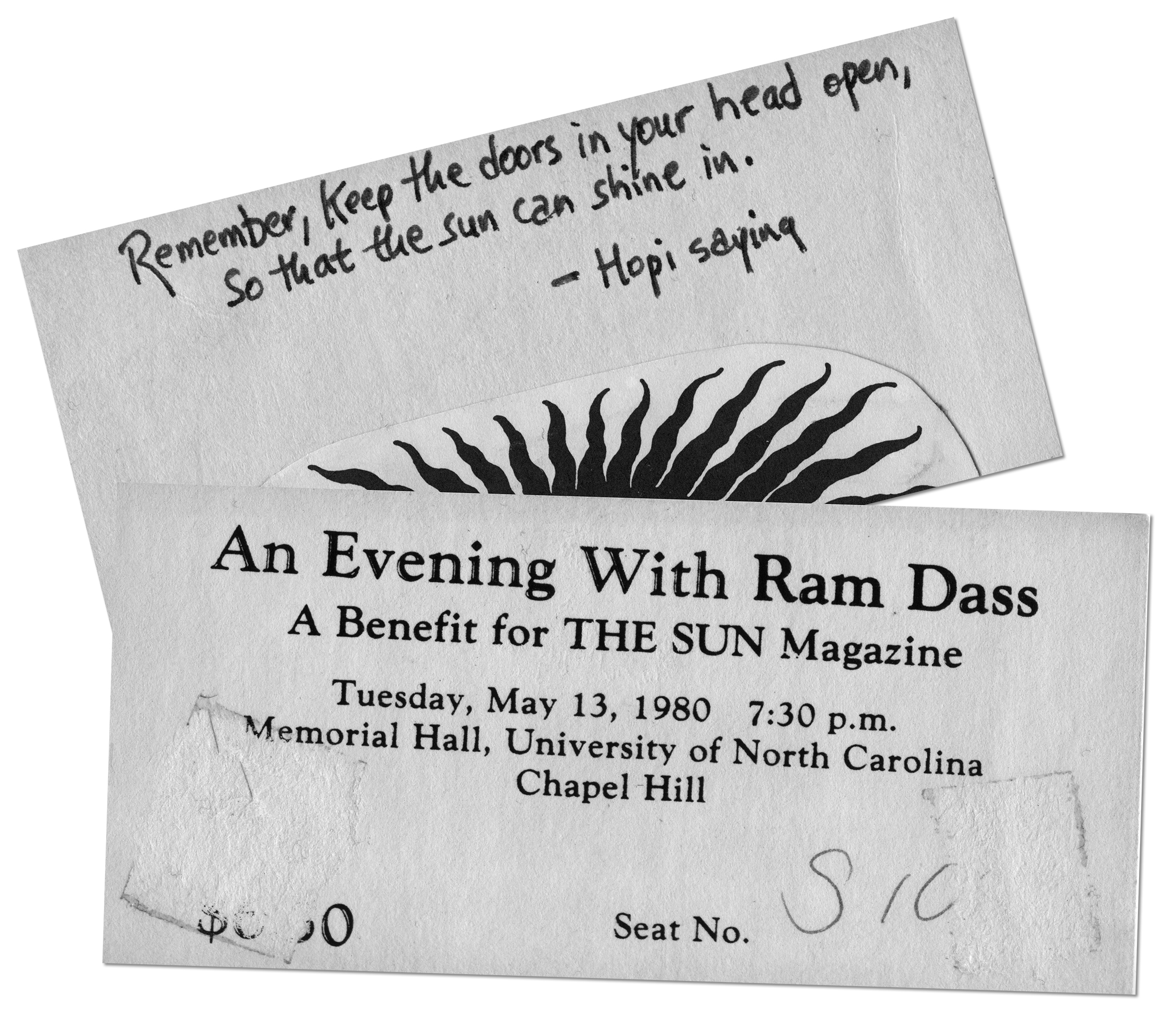We use cookies to improve our services and remember your choices for future visits. For more information see our Privacy Policy and Terms of Use.
May: This Month in Sun History
A Look Back for Our 50th Year of Publication

Ticket to “An Evening with Ram Dass.” This particular ticket was tacked on the wall of Sy’s office in the 1980s, with a quote that he was fond of written on the back.
Asking for help is often difficult, and can be doubly so when the person you’re asking is an idol of yours — someone you’d claim “has done for religion what the Beatles did for music.” Such was the case for Sun founder and editor Sy Safransky when he considered reaching out to spiritual leader Ram Dass. At the tail end of the 1970s the number of Sun subscribers hovered somewhere south of a thousand, and the magazine was in dire financial straits. Assistant editor Elizabeth Rose Campbell suggested Sy write to Ram Dass for assistance. When he couldn’t bring himself to do it, she wrote the letter herself.
The ultimate result, on a warm night in May 1980, was a benefit lecture that Ram Dass gave in a large hall with no air-conditioning on the campus of the University of North Carolina at Chapel Hill. Local band Silkworm opened the evening, and, following his talk, Ram Dass took questions from the audience about spiritual mediums, LSD, sex, gurus, and death. The event was a success — roughly a thousand people attended, raising enough money to cover a quarter of The Sun’s annual budget. When explaining to the audience why he’d agreed to the appearance, Ram Dass said, “All I can tell you is I am a subscriber. And a lover of the magazine and the beings that put it together, and how it comes together, and the way the spirit manifests through it. There are a lot of little seed things around the country that I just feel love for. The Sun is another dance I feel good in my heart about.”
A year later, when the magazine was facing yet another financial crisis, Ram Dass came back to Chapel Hill and did it again, helping this “little seed thing” to survive a bit longer.
We’ll mail you a free copy of this month’s issue. Plus you’ll get full online access—including more than 50 years of archives.
Request a Free Issue